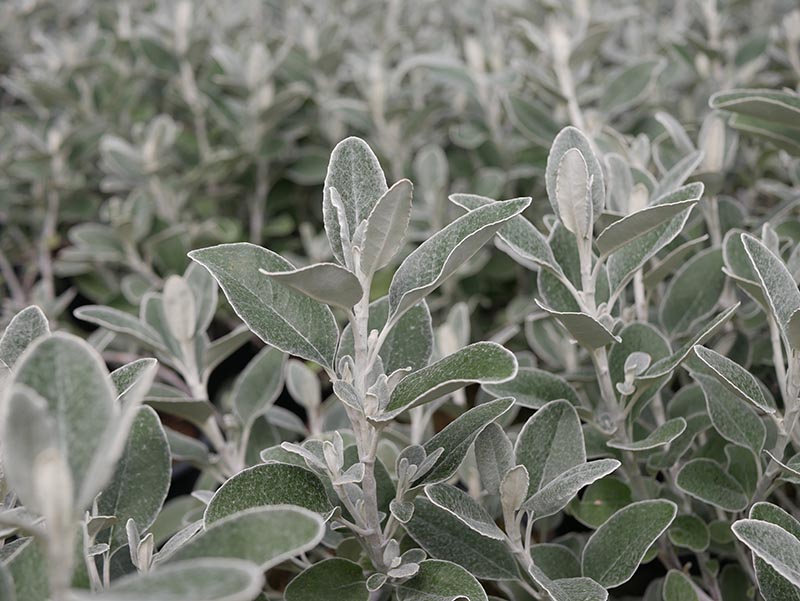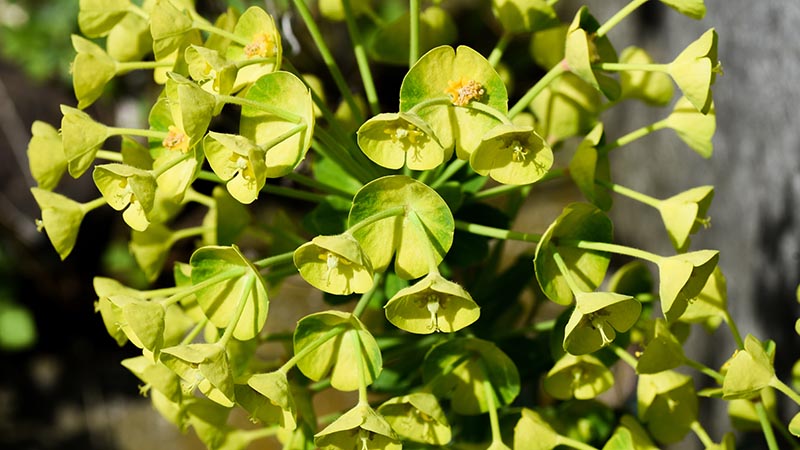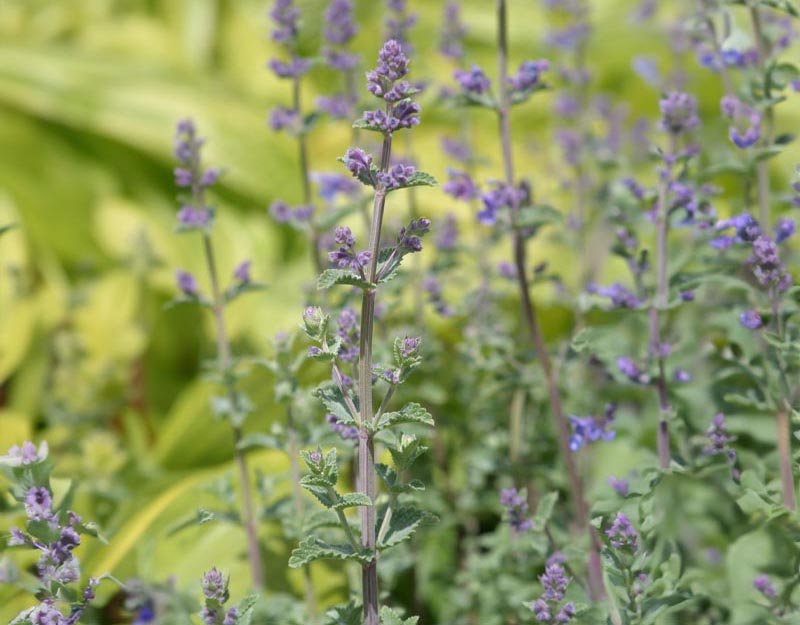Drought Tolerant Plants
Vibrant and low maintenance planting
With climate change affecting our planet in many ways, we should be thinking about planting to suit higher temperatures and long periods of drought. We may consider using plants that are adapted to hot, dry summers, especially in the south of England where we experience regular hosepipe bans and milder winters. Thankfully, it’s possible to achieve stunning, dramatic plantings with drought tolerant species, which require less overall maintenance and moisture.
A large number of drought tolerant plants grow well under the same conditions and can be successfully planted together; many of these originate from dry, hot regions, such as the Mediterranean, and therefore create a harmonious planting scheme. Mediterranean style planting is becoming increasingly popular, as these plants have evolved over time to cope with limited rainfall and well-drained soil. Some species have adaptations, such as hairy foliage, that traps moisture and deflects light, whilst others have protection from the sun with their waxy leaves which reduce transpiration. Plants with silvery leaves are also protected from strong sunlight. These plants often have deep and branching root systems to seek out soil moisture. Incorporating these species will allow your garden to thrive, even during periods where rainfall is limited and hosepipe bans are in place.
You aren’t necessarily limiting yourself on fragrance, colour, or beauty by selecting drought tolerant species. There are many varieties of shrubs, flowering perennials, climbers, and ornamental grasses that can cope with drought and this gives an abundance of planting options. Researching native species is a great way to start planning your drought tolerant green space, as these are often highly adaptable to their local weather conditions, including extreme weather events. In addition to their reduced water needs, native plants also nurture other elements of the ecosystem and provide benefits to biodiversity. They are also more resilient to local pests, leading to less requirement for plant feed and pest control measures.
There are many benefits of introducing drought tolerant plants to your landscape. Firstly, the risk of losing plants during the hottest and driest months of the year significantly reduces, and your green space will continue to thrive throughout these challenging periods. Drought tolerant plants have much fewer maintenance needs as their watering requirements are significantly less, once established. These species are great if you want to be more sustainable and increase the water resilience of your garden. In addition, the plants tend to improve biodiversity by providing plenty of nectar and pollen for pollinating insects.
Drought tolerant plants are well suited to sunny borders and gravel gardens; an aesthetically pleasing, low maintenance planting scheme. A gravel garden can be created by laying weed-suppressing membrane over the soil before covering with a moisture-retaining mulch of gravel. This type of border is perfect for a sunny, well-drained area with low fertility soil.
Drought tolerant planting scheme

Stachys and Salvia flowering in a drought tolerant garden

Achillea ‘Moonshine’
Achillea ‘Moonshine’
A drought tolerant herbaceous perennial that grows up to 60cm in height, with grey-green foliage and flat heads of canary yellow flowers on erect stems from June to September. These flat heads work well as a landing platform for hoverflies and other pollinators. Looks great as part of a gravel garden and in combination with ornamental grasses.
Brachyglottis ‘Sunshine’
A mound-forming shrub with hairy, silver-grey foliage and bright yellow, daisy-like flowers from June to July. It is a great groundcover option for sunny borders. Looks great when combined with other silver-leaved plants and copes well with salt-laden air.
Calamagrostis × acutiflora ‘Karl Foerster’
A clump-forming, upright grass with arching leaves which emerge in early spring and feathery plumes in summer that later fade to buff in autumn. Looks striking when planted in groups. The height and erect habit make this grass ideal for forming a screen and it brings lovely winter interest when its stems catch the frost.

Brachyglottis ‘Sunshine’

Calamagrostis × acutiflora ‘Karl Foerster’
Cistus × pulverulentus ‘Sunset’
A low spreading shrub with grey-green, wavy leaves and masses of magenta flowers with prominent yellow centres. Cistus × pulverulentus ‘Sunset’ is a lovely low maintenance planting option and works well positioned in the front of a sunny border.
Euphorbia characias subsp. wulfenii
An upright shrub with showy heads of vibrant, lime green flowers and oblong, grey-green foliage. Brings structure to borders with its natural, rounded shape and its flowers create a bold feature within a drought tolerant planting scheme.
Festuca glauca
An evergreen, dwarf grass with upright tussocks of stiff, blue, needle-like foliage and blue flowerheads in summer. Provides the most intense blue foliage in full sun and well-drained soil. Works well in a container or as part of a gravel garden.
Geranium endressi ‘Wargrave Pink’
A long flowering perennial that reaches around 60cm in height, with veined, divided foliage and saucer-shaped, pink flowers. Provides a long season of nectar for bees and other pollinators. It’s tolerant of many conditions, except waterlogged soil.

Festuca glauca

Cistus × pulverulentus ‘Sunset’

Euphorbia characias subsp.wulfenii

Geranium endressi ‘Wargrave Pink’

Nepeta × faassenii
Nepeta × faassenii
A clump-forming, dwarf perennial with spikes of lavender flowers from June to September and aromatic, hairy, grey-green leaves. Great for edging borders and pathways and it gives off a lovely scent.
Perovskia ‘Blue Spire’
An erect, deciduous perennial with slender, white stems that bear aromatic, grey-green leaves and panicles of small, lavender-blue flowers. Perovskia ‘Blue Spire’ is great for planting en masse alongside pathways and positioned in the middle of sunny borders. Works well with ornamental grasses.
Santolina chamaecyparissus
A small clump-forming shrub with aromatic, finely divided, light grey foliage. Small, button-like, scented yellow flowers appear in summer. Santolina chamaecyparissus is a nice edging plant for a sunny border and adds a lovely splash of colour during the summer months.

Perovskia ‘Blue Spire’

Santolina chamaecyparissus – Agnieszka Kwiecień, Nova, CC BY-SA 4.0, via Wikimedia
Sedum ‘Autumn Joy’
An upright perennial that has flat-topped, salmon pink flowerheads which transition to a stunning pink-bronze, and eventually copper-red, boasting fantastic autumn colour. Its grey-green foliage is fleshy and succulent-like. Great for adding structure and the dried flowerheads look pretty in winter with a light dusting of frost. A useful late source of nectar for bees and butterflies.
Verbena bonariensis
A sun-loving perennial that has tall branching stems with flattened heads of lilac-purple flowers. Verbena bonariensis is great for adding height and works well in a prairie-style planting scheme alongside tall grasses. Can be positioned in any part of a sunny border. Highly appreciated by butterflies.

Sedum ‘Autumn Joy’

Verbena bonariensis
What is xeriscaping?
Xeriscaping involves landscape design to reduce or eliminate future watering, whilst creating a beautiful green space. The aim is to keep plants healthy and thriving with little maintenance, and avoiding adding strain to an already limited water supply. Drought tolerant species are planted amongst soil, mulch, and rocks; these plants can cope well under drought conditions but will also withstand downpours we regularly experience in the UK.
A prairie planting style can be achieved with xeriscaping by grouping plants together; this can give a very pretty effect. High maintenance lawns may also be replaced; ornamental grasses work well as an alternative amongst other drought tolerant plants and require significantly less water than traditional lawns.
It’s important to ensure that free-draining soil is used within these planting schemes to avoid plants becoming waterlogged. Ensure to mulch the soil with biodegradable mulch, such as bark or woodchips, to help retain moisture and minimise weed growth and therefore, result in a low maintenance landscape.

A Xeriscape garden filled with drought tolerant plants
Planting and care recommendations for drought tolerant plants
When looking to start planting your drought tolerant landscape, it’s preferable to use smaller plants as these develop resilience to their surroundings as they grow and mature. Bigger, mature plants can require more maintenance at first, as they need more regular watering initially until they become fully established. Autumn is usually ideal for planting, as it allows smaller plants to grow adequately, before any potential periods of drought could occur during the following summer. However, Mediterranean plants should be planted in spring; if these species are planted in autumn they can suffer from root rot over winter, due to the cold, damp conditions during this time of year.
Before planting, ensure to fully soak the plants within their pots. When preparing the planting area, include a combination of organic matter and gravel to help the soil retain its moisture effectively and improve drainage. After planting, mulch the ground to enhance moisture retention; this can be replenished at the start of each growing season. If you do choose to add fertiliser, only use a small amount, as too much new growth will lead to additional watering and the plant can suffer with frost damage during the winter months.
When it comes to watering, new plants should be watered regularly during their first growing season. Thankfully, they will become more tolerant to drought once they are fully established. Target your watering towards the base of the plant, rather than on the foliage, as the majority of this will unfortunately evaporate and not penetrate the roots. If you spot any weeds over time, ensure to regularly remove them as these can be detrimental to your plants. If you’d prefer to keep an area of lawn within your landscape, it’s good to know that they are actually very drought tolerant and tend to recover during higher rainfall periods in autumn.
Get in touch with our expert G Team if you need advice on drought tolerant planting, or head to our innovative Tender Tool app to get a quick and easy quote.

